Table of contents
Teff ( Tef) is a type of millet with probably the smallest grains: about 150 raw tef grains make up the weight of one grain of wheat. Dwarf millet ( Eragrostis tef) is one of the most important types of grain in parts of Africa.
Use in the kitchen:
The whole teff seeds can be enjoyed cooked sweetly or savory, similar to rice, quinoa, amaranth, buckwheat or other gluten-free grains. What does teff taste like? The taste is slightly sweet and pleasantly nutty.
Rinsed briefly with hot water, teff needs about 15 minutes to cook. Dwarf millet tastes good in casseroles, patties and soups or cooked in plant milk as a sweet porridge or pudding-like dish. Both the whole grains and the flour are suitable for thickening sauces.
In addition, millet flour can also be used to make gluten-free pasta, bread, baked goods, cookies or pancakes. When baking gluten-free, you have to be aware of the lack of gluten and the associated baking properties. The missing binding agent can be replaced with potato starch and tapioca flour in gluten-free grain alternatives, for example. In Ethiopia, the ground flour is used to make a soft pan-fried flatbread called "Injera".
If you want to eat teff uncooked (e.g. in a salad), soak small amounts in water a few hours before eating. This causes the small grains to swell and some of the bitter substances to dissolve in the soaking water, which you then throw away. The teff grains are now edible raw and easier to digest. For your morning muesli (e.g. the gluten-free and raw vegan Erb-Müesli), you can also finely grind the small seeds in a grain mill or coffee grinder. This allows the body to absorb the nutrients better. A variant that is not raw but also tolerable is to briefly roast the grains.
The white seeds of the dwarf millet are used for baking bread, while brown seeds are used in Ethiopia and Eritrea in beer production (Tella) or as a base for other alcoholic beverages (Katikalla or Katikala). 1
Recipe for vegan waffles with teff flour:
Ingredients: 150 g teff flour, 2 tsp cream of tartar baking powder, 250 ml plant-based milk ( oat drink), 1 tbsp freshly squeezed lemon juice, 1 tbsp maple syrup, 30 g coconut oil (alternatively rapeseed oil), 100 graspberries, 1 tbsp white almond butter, 1 tspvanilla powder ( vanilla extract), 1 pinch of salt.
Preparation: Mix all the wet ingredients (milk, lemon juice, maple syrup, melted coconut oil, almond butter, vanilla extract) and stir in the flour mixed with baking powder. Add salt and raspberries and stir well again. Let the dough rest for 10-15 minutes so that the teff flour can thicken a little. In the meantime, you can preheat the waffle iron. Put about 2 tablespoons of the dough into the waffle iron and bake the dough well. Since the teff flour (with brown grains) is naturally darker, the waffles also appear brownish in color. The finished waffles can be garnished with berries and almond butter and enjoyed.
If you don't have a waffle iron, you can also fry the dough in a pan with a little oil.
Teff grains as tea:
Teff is relatively unknown in Western Europe for making tea. In Turkey, teff tea is known as Teff Tohumlu Çay and in the Arab world it is also drunk with mate and senna to lose weight. Detox teas with teff usually also contain green tea, green coffee and cinnamon.
You can brew the whole teff seeds as a tea, but you shouldn't drink it too often because of the phytic acid they contain. There are no conclusive studies on this yet, so we recommend buying ready-made mixtures and following the instructions on the packaging exactly. Too much phytic acid can inhibit the absorption of important minerals.
| Not only vegans or vegetarians should read this: Vegans often eat unhealthily. Avoidable nutritional errors. |
Shopping - where to buy?
Dwarf millet is hardly available in supermarket chains such as Coop, Migros, Denner, Volg, Spar, Aldi, Lidl, Rewe, Edeka, Hofer etc. Organic supermarkets ( Denn's Biomarkt), organic shops, health food stores, drugstores or online shops sell teff products such as teff flour, teff flakes or whole teff grains, usually also in organic quality.
Found in the wild:
In the north-eastern cultivation areas of Africa (and up to the middle latitudes with a temperate climate), dwarf millet is also often found growing wild.
Storage:
Like grain or grain-like products, teff should be stored in a cool place, protected from light and, above all, dry. The contents of an opened package are best stored in a screw-top jar or a sealable container. This also keeps the millet away from pests. Processed products such as flour or flakes should be used quickly, as the destroyed shell of the individual grains can easily spoil (become rancid) if stored for a long time.
Ingredients - nutritional value - calories:
Teff has an energy content of 367 kcal per 100 g. The fat content is 2.4%, which is rather low compared to the carbohydrate content (73%, of which 8% is fiber) and protein (13%). 2
The manganese content is particularly high in dwarf millet at 9.2 mg/100g. Pine nuts at 8.8 and wheat bran at 11.5 mg/100g have similar values. 100 g of unshelled hemp seeds also cover three times the daily requirement at 7.6 mg. 2 Manganese is very important for healthy cartilage and connective tissue. An oversupply of this trace element has no negative effects. A deficiency is also very rare and usually occurs in combination with other nutrient deficiencies.
Teff contains 429 mg/100g of phosphorus. Protein-rich foods in particular contain a lot of phosphorus, such as chia seeds (860 mg/100g), linseed (642 mg/100g) or almonds (481 mg/100g). 2 This essential element is usually available in sufficient quantities in our food and plays an important role in bones, teeth, cell membranes and in energy production. An oversupply is more likely to be achieved with ready-made products, especially processed meat and dairy products, which can promote calcinosis.
The trace element iron is well represented in the small grains of dwarf millet with 7.6 mg/100g. This covers about 50% of the daily requirement. 3 A combination with ingredients such as amaranth, chia and hemp seeds is very useful here, as they have similar iron values. Iron is also contained in dried herbs and green vegetables (e.g. in raw wild garlic : 2.9 mg/100g and spinach : 2.7 mg/100g). 2
Essential amino acids in millet with notable amounts are: tryptophan (0.14 g), threonine (0.51 g), methionine (0.43 g), phenylalanine (0.7 g) and leucine (1.1 g). 2 These components of proteins are commonly found in nuts, seeds and legumes and have important functions in our body. You can find more information by clicking on these ingredients.
Health aspects - effects:
Is teff gluten-free? Teff is a gluten-free grain that has good baking properties. It was found that patients with celiac disease who included teff in their diet experienced significant relief from their symptoms. It is believed that teff has a healing effect on the damaged intestinal mucosa. 4
Due to the low glycemic index (GI) of 27, blood sugar levels rise only slowly when teff products are consumed. Diabetics and overweight people also benefit from this effect. In addition, the high fiber content is even said to protect against type 2 diabetes. 5
A study from Ethiopia shows that pregnant women who consume teff as sourdough flatbread (injera) daily are less likely to suffer from anemia. 6
How healthy is teff flour? Since dwarf millet cannot be peeled due to its small seed size, it is always a whole grain product (even ground) and contains valuable secondary plant substances (secondary plant substances).
Dangers - intolerances - side effects:
Eating large amounts of raw millet is not advisable due to the oxalic acid and phytic acid it contains. 7 However, some of these ingredients can be reduced by washing and soaking. Read the article Phytic acid or phytate and soaking or sprouting.
Occurrence - Origin:
The origin of Eragrostis tef lies in the highlands of Abyssinia, at an altitude of 1000 to 3000 meters. 8 Teff spread thousands of years ago in northeastern and eastern tropical Africa and on the Arabian Peninsula. Today, dwarf millet is also cultivated in many other tropical and subtropical regions. In Europe, dwarf millet is attracting increasing interest not only for eating, but also for cultivation. 9
Cultivation - Harvest:
Teff has proven itself as an annual plant, particularly in areas with very little rainfall. 10 It grows upright to a height of 30 to 100 cm and has overhanging panicles as flowers that are up to 50 cm long. The fruits (seeds, caryopses) are whitish or reddish brown, oval in shape and about 1 mm long. 11
The dwarf millet is very undemanding, it can survive periods of drought, but also withstands prolonged waterlogging. However, broken stalks are not uncommon and in some years lead to drastic crop losses. The harvest can take place after just 3 months. Teff grains remain viable for a long time and are also very easy to store. The small grains have proven themselves as seed in Africa, especially for nomadic peoples, as they can be stored anywhere and easily transported. 12
Social aspects of teff cultivation:
Teff has been an important staple food in some African countries for thousands of years. A Dutch company registered a patent for teff flour in 2004. 13 This means that this flour can only be exported to the Netherlands, England, Italy, Belgium and Germany under strict conditions. This grain can only be traded in these countries under the name of this company and this company also sets the price. The Ethiopian government has unsuccessfully sued for the patent. However, an action to have it annulled in Germany was successful, and this patent right is no longer valid there. 14
If demand from the West increases, however, these African states may only produce this ancient grain for the international market and it may no longer be able to supply the local population due to the high price. If agricultural companies have a monopoly on plants, they control the seeds and subsequently determine what we eat. 14
The long transport routes are also an ecological problem, which is why locally grown plants should always be given preference.
General information:
Like conventional grains, dwarf millet belongs to the grass family (Poaceae), which is why it is classified as a grain and not as a pseudo-grain, even if it is gluten-free. Gluten-free grains include corn, rice, millet and bamboo seeds. Pseudo-grains are plant species that do not belong to the grass family (monocotyledonous plants), but rather come from dicotyledonous plant families, such as quinoa, buckwheat, amaranth or Mexican chia.
According to Wikipedia, the collective term "millet" includes both the much larger grains of sorghum ( Sorghum) and the smaller millet (true millet, small millet). The second main group (millet) includes most of the genera known to us, such as foxtail millet or brown millet ( Panicum), foxtail millet ( Setaria), pearl millet ( Pennisetum), finger millet ( Eleusine) and teff ( Eragrostis).
Alternative names:
The original Latin name for Eragrostis tef (Zucc.) Trotter was Poa tef. The name tef comes from Amharic (Ethiopia). 15 Other Latin synonyms are Poa abyssinica, Poa radicans, Poa cerealis, Cynodon abyssinicus, Eragrostis abyssinica, Eragrostis abyssinica, Poa flaccida, Eragrostis pilosa subsp. abyssinica. Eragrostis abyssinica var. alba. Eragrostis abyssinica var. viriidis, Eragrostis pilosa var. tef, Eragrostis tef f. spiciformis, Eragrostis tef subsp. spiciformis. 9 Abyssinian dwarf millet is another German name for it. 11
In English, the seeds of the dwarf millet are known as teff, (Williams) lovegrass or annual bunch grass. The term lovegrass is derived from the Greek words "eros" (love) and "agrostis" (grass). 16
Other uses:
In Africa, not only the grass but also the grains (mainly the brown ones) are used as animal feed. 10
Literature - Sources:
Bibliography - 16 Sources
| 1. | Ternes W. Lebensmittellexikon. Behr's Verlag DE. 2005. |
| 2. | USDA United States Department of Agriculture. |
| 3. | DGE Deutsche Gesellschaft für Ernährung. |
| 4. | Hopman E, Dekking L et a. Tef in the diet of celiac patients in The Netherlands. Scand J Gastroenterol. 2008;43(3). |
| 5. | InterAct Consortium. Dietary fibre and incidence of type 2 diabetes in eight European countries: the EPIC-InterAct Study and a meta-analysis of prospective studies. Diabetologia. 2015;58(7). |
| 6. | Mohammed SH, Taye H et al. Teff consumption and anemia in pregnant Ethiopian women: a case-control study. Eur J Nutr. 2019;58(5). |
| 7. | Bundeszentrum für Ernährung. Urgetreide: Alte Getreidesorten neu in der Küche. |
| 8. | Nowak B, Schulz B. Taschenlexikon tropischer Nutzpflanzen und ihrer Früchte. Quelle u. Mayer Verlag. 2008. |
| 9. | Kew. World checklist of selected plant families (WCSP). |
| 10. | Rehm S, Espig G. Die Kulturpflanzen der Tropen und Subtropen. Anbau, wirtschaftliche Bedeutung, Verwertung. Eugen Ulmer: Stuttgart. 1976. |
| 11. | Brücher H. Tropische Nutzpflanzen. Ursprung, Evolution und Domestikation. Springer: Berlin, Heidelberg, New York. 1977. |
| 12. | Teff-info.de Anbau & Ernte. |
| 13. | Worldwide.espagenet.com Patentanmeldung EP1646287A1 Processing of teff flour. |
| 14. | Utopia.de Teff Anwendung und Besonderheiten der Zwerghirse. |
| 15. | Genaust H. Etymologisches Wörterbuch der botanischen Pflanzennamen. Springer Verlag: Basel. 1983. |
| 16. | Quattrocchi U. CRC World Dictionary of Grasses. II E-O. CRC Press. 2006. |

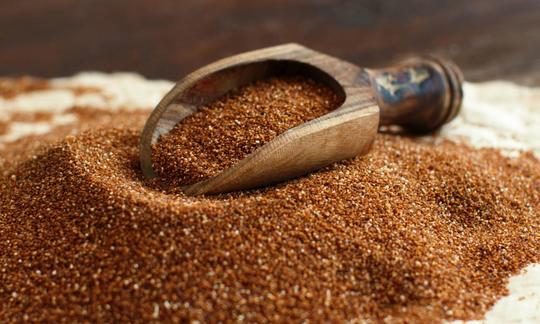

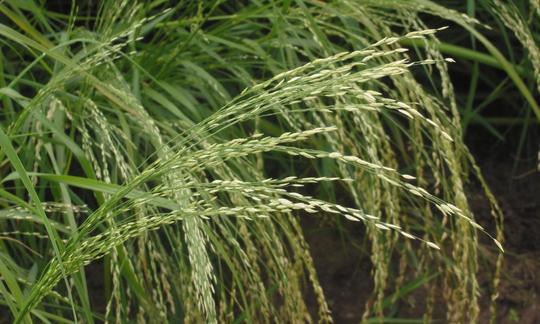

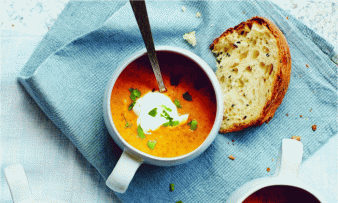
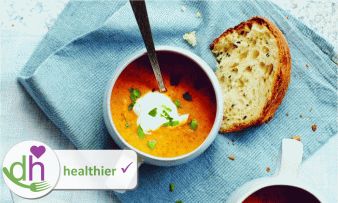


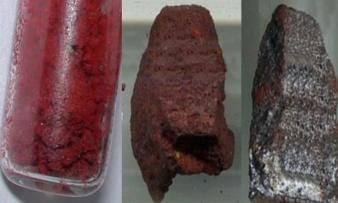


Comments